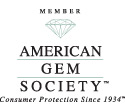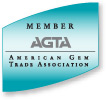EGL Graded Diamonds– Banned from Polygon and Rapnet
September 20th, 2014 by James L. Sweaney, CGA, FGA. GGThe Polygon Trading Network, an online buying/selling service for the diamond trade, announced the latest bombshell in the EGL Diamond Grading scandal. They will no longer list diamonds with European Gemological Laboratory International (EGL) reports. This follows in the wake of the decision by another trading network, RapNet, to ban all EGL report for it’s network.
Trouble has long been brewing in the diamond grading industry. The original grading system was developed by the Gemological Institute of America in the 1950’s. The GIA system introduced terminology for color and clarity grades as well as simple standards for analyzing the cut by depth and table measurements. Their motive was simple — provided standardized and unbiased diamond grading so consumers would know what they were buying.
Over the years, GIA diamond grading reports have been the gold standard– GIA invented the system and has kept impartiality and respect by maintaining a strict arm’s length relationship with diamond vendors.
EGL grading uses the same grading terminology established by GIA, but over the years, their application of the grades has drifted away from GIA standards. The general consensus of many in the jewelry industry is that the EGL has allowed the natural bias of diamond sellers to influence their grading. In other words, their grading is too lenient.
Consumers don’t really understand the nuances of diamond grading– to most, a grade is a grade. While using GIA’s grading terms, EGL grading has become the orange to GIA’s Apple.
This grading drift has meant that the whole purpose of formal diamond grading has been corrupted. The marketplace has clearly reflected the problem. For example, today, the wholesale price listed on Polygon for a one carat diamond graded H color SI1 by GIA recently averaged $5340 per carat, while the EGL H SI1 averaged $4120 per carat– a difference of 23%.
Consumers have access to pricing information on the internet, but aren’t market savvy and don’t really understand the nuances of diamond grading– to most, a grade is a grade. As a result, the problem recently erupted when retail jewelers selling diamonds based on EGL reports were sued for misrepresentation by their customers.
The obvious answer to the problem is for EGL to get its act together and align it’s grading with GIA– it’s basically a management issue. The master diamonds (color samples) used by EGL can be graded by GIA — this will be a good start to reestablish the legitimacy of EGL grading. Cut grading can be standardized fairly easily– numbers are pretty straightforward, so common sense guidelines for cut grading are relatively easy to establish. Clarity is probably the most subjective of the C’s and the most difficult to standardize.
In my experience as a Diamond Grading Supervisor at the GIA lab in Santa Monica, early 1980’s, it took about 6 months to train new graders to be consistent with the lab practice– and these were all Graduate Gemologists. Getting a group of independent minded folks to see things the same way is like herding cats, but it can be done. It just takes discipline and commitment– If the folks at EGL want to get in synch with GIA, they can do it.
At Mardon, because of our experience at GIA and years of selling diamonds, we’ve always recommended GIA graded diamonds to our clients. In our opinion, the AGS lab and HRD lab in Europe also grade accurately.
As American Gem Society members, we’re committed to consumer protection thru education and fair trade practices. We want you to buy the diamond, not the piece of paper. The certificate helps understand the gem but it’s the map, not the land. We do our best to represent our diamonds fairly and accurately and to show our customers where the real value of the diamond lies.







